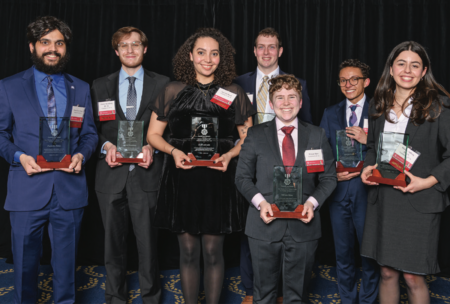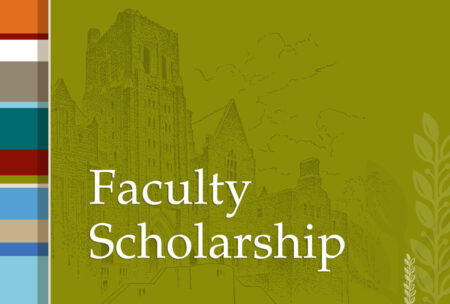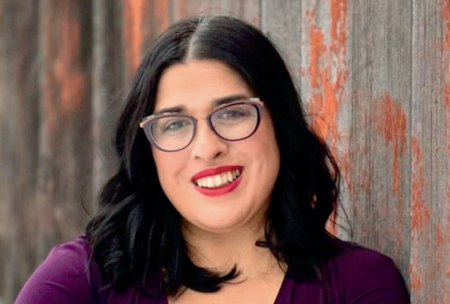by Valerie P. Hans, Charles F. Rechlin Professor of Law,
and Jeffrey J. Rachlinski, Henry Allen Mark Professor of Law

Decades ago, psychologist Kurt Lewin faced a dilemma. He had fled Hitler’s Germany in the 1930s to the United States where he taught at Cornell University and elsewhere. When America entered World War II, he wanted to help his adopted country. Lewin felt he could use his understanding of human nature to direct, or “channel,” behavior to support the war effort. For example, the government sent substantial supplies of meat to soldiers and allies overseas, leading to scarcity. How could the government encourage alternative sources of protein, including organ meats? Lewin approached this challenge as an opportunity to test basic social psychological theories about persuasion. He recruited homemakers, who were the prime decision makers as to what went on the family dinner table at the time. The women were divided into two groups. Half of them heard a lecture on the benefits of organ meats and received recipes to try out. The other half engaged in group discussions about serving organ meats and afterwards were asked to commit publicly to one another that they would experiment with novel meal choices. Lewin referred to the public commitment as a “channel factor”—by which he meant a strategy that would remove impediments to making a particular choice. If others were doing it, he reasoned, the women could explain to their families that their new dietary choices were part of a community effort to support the war effort. A week later, he found dramatic differences. Just four of the forty-one women who listened to the lecture served organ meats, compared to twenty-three of the forty-four women who engaged in group discussions and were asked for their public commitment. Lewin conducted many other studies of persuasion and is today known as the founder of social psychology.
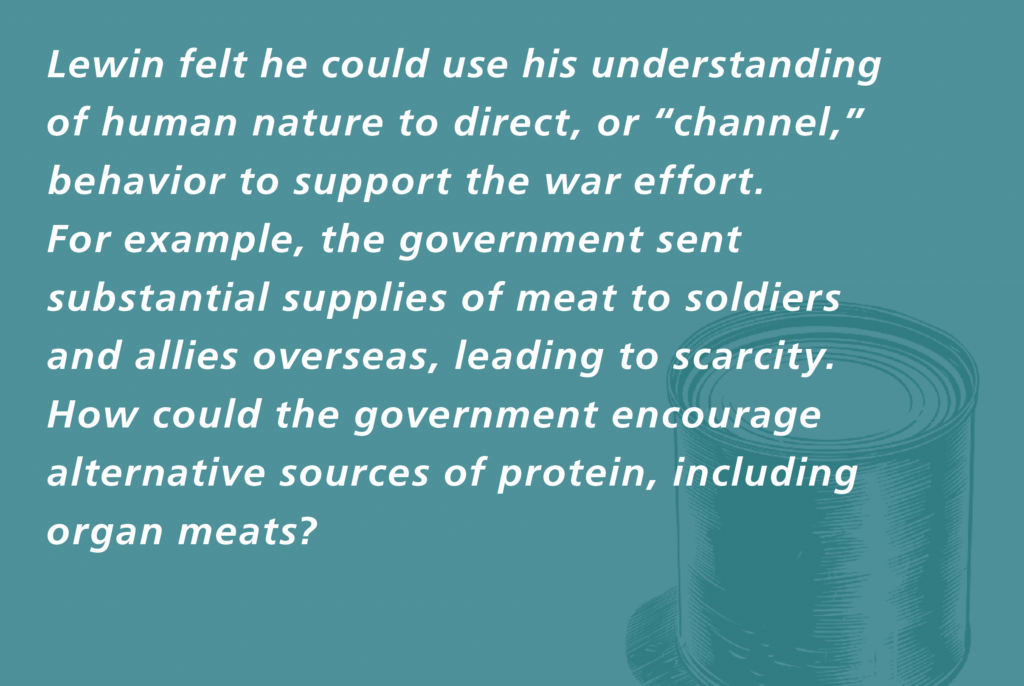
The problem Lewin faced is starkly similar to that of trial lawyers. To succeed, trial lawyers must persuade either an individual (a judge) or a group (a jury) to decide the case in favor of their client. Trial lawyers must thus direct the thoughts and actions of their audiences toward a particular conclusion. Whichever side they are on, they must overcome existing predilections, just like the women in Lewin’s research. Prosecutors, for example, must induce juries to overcome a natural resistance to condemning others, while defense attorneys must induce juries to feel sympathy for someone who is accused of committing a heinous act. Similarly, plaintiffs in civil cases must often convince a jury to condemn the actions of a trusted professional—like a medical doctor or respected company. Trial lawyers must find the “channel factor” that leads a decision maker to a favorable outcome for their client.
Given the complexity of their task, trial lawyers naturally use a variety of strategies. Traditionally, many lawyers relied on untested hunches and theories about what worked to get judges and juries to listen. Starting several decades ago, however, psychologists and other social scientists began to explore how lawyers could deploy psychological insights and research findings to improve their advocacy efforts. Some lawyers, in fact, use the public commitment technique that Lewin pioneered. During voir dire, criminal defense lawyers (if they are allowed to do so) will sometimes ask jurors explicitly to commit publicly to the legal norm that their client is innocent until proven guilty. Psychologists have also studied how best to question prospective jurors to elicit their existing biases, recognizing that most people are reluctant to admit that they are prejudiced.
Psychologists have also found that telling a story is one of the keys to persuasion in the courtroom. Researchers have discovered that as jurors listen to the evidence being presented in a trial, they will naturally begin to develop a narrative account or story of what happened in the events in the case. Consider a criminal case involving a bar fight that results in a defendant shooting and killing a victim. Suppose that the prosecution argues that it is first-degree homicide, but the defense claims self-defense. Jurors listen to the evidence, construct a story about the events, and then apply the legal instructions to determine whether the story they have developed is a better fit for homicide or self-defense. A verdict of self-defense, for example, might require that the story include facts showing that the victim threatened the defendant. In contrast, a story that supports a verdict of first-degree homicide would not include such a threat and instead might include facts showing that the defendant arrived at the scene with an intent to kill, perhaps even bringing a weapon to the bar.
The story model of jury decision making provides several lessons for the trial lawyer. It shows that one of the principal tasks the lawyer faces is piecing the narrative together for the jury. After all, trials consist of a series of witnesses interrupted by objections and cross examination. No one witness will testify concerning all of the story, so the lawyer must continuously remind the jury as to where in the narrative the evidence fits. Furthermore, in a case like the example of the bar fight, the lawyer should consider presenting witnesses in “story order” (often chronologically), to help the jurors develop the story the way most people think about events. Research shows that presenting evidence in the story order makes the case more persuasive. The story model also helps a trial lawyer recognize that even complex commercial disputes are just stories about a business deal that went awry, while many torts are the tragic tale of how an accident occurred.
Of course not every case is a bar fight, and not every trial turns on the story. Some criminal cases are whodunnits—in which the defendant denies even being part of the scene. Many tort cases are the equivalent, in which a company might argue that a chemical they produced was not the cause of some serious case of cancer or the like. In such cases, trial lawyers may recognize that most people find the evaluation of scientific evidence and statistical probabilities to be difficult. People—even judges (as Rachlinski has found)—fail to understand probabilistic evidence well. A litigator thus needs to use empirically tested techniques to present and explain such evidence effectively.
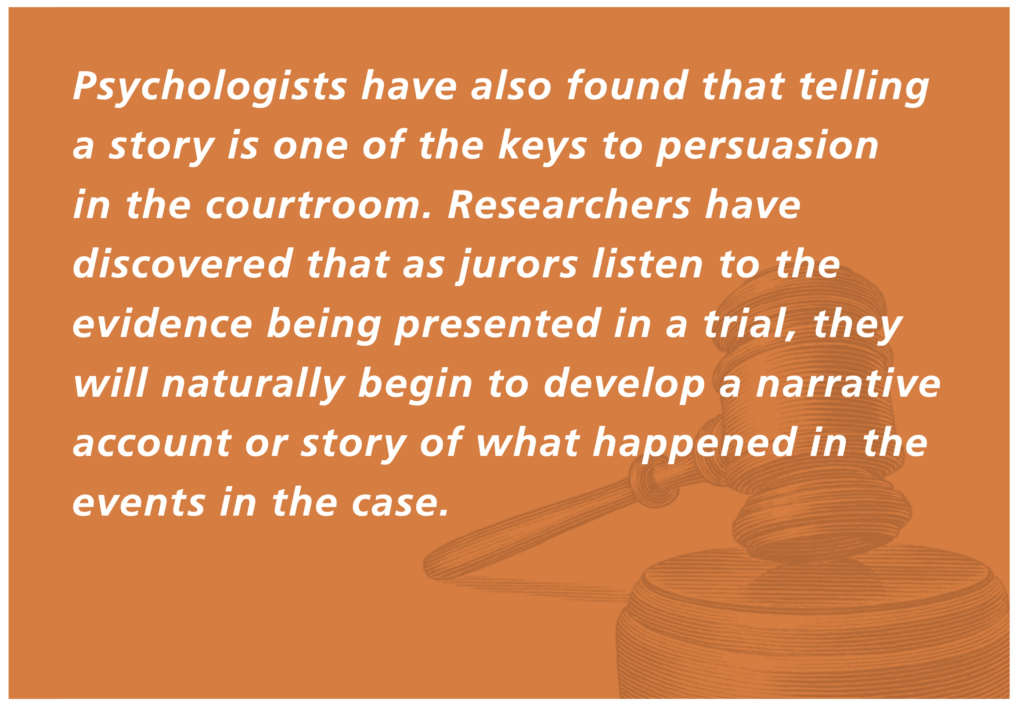
The story model of jury decision making provides several lessons for the trial lawyer. It shows that one of the principal tasks the lawyer faces is piecing the narrative together for the jury. After all, trials consist of a series of witnesses interrupted by objections and cross examination. No one witness will testify concerning all of the story, so the lawyer must continuously remind the jury as to where in the narrative the evidence fits.
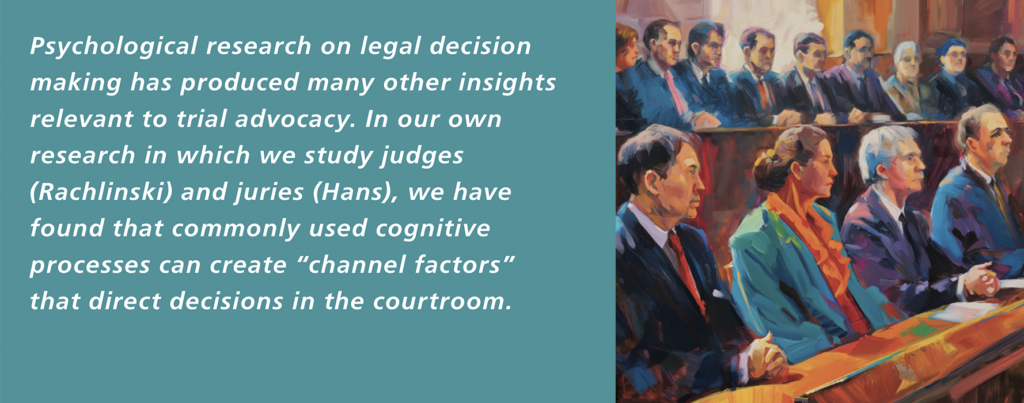
Psychological research on legal decision making has produced many other insights relevant to trial advocacy. In our own research in which we study judges (Rachlinski) and juries (Hans), we have found that commonly used cognitive processes can create “channel factors” that direct decisions in the courtroom. For example, we have both studied the cognitive process known as “anchoring.” Anchoring is the tendency to rely on numeric reference points when making numeric judgments. It is a sensible mental shortcut (which psychologists sometimes call a “heuristic”). For example, if you see a sticker on a used car in a dealer’s lot that says $11,866, you know you might be able to negotiate to pay less, and you might have to pay more because of taxes and fees, but you will pay roughly that amount for the vehicle. Numeric anchors, however, influence judgment even when they should not. For example, Hans found that participants in a mock-jury study awarded a plaintiff more for pain and suffering when they learned that “courtroom renovations” would cost $1.5 million, than when they learned renovations would cost only $50,000. Even though the cost of renovating the court had nothing to do with the nature of the plaintiff’s injury, it affected awards. The high and low numbers influence how the jurors think, channeling their thinking on an appropriate award in one direction or other. Judges are not immune from these influences. Using a hypothetical case, Rachlinski found that sitting trial judges in Texas fined a “roadhouse” for violating a noise ordinance more when they learned that its name was “Roadhouse 11,866” (after its street address), as compared to “Roadhouse 58.” In our research, we explore these and other psychological phenomenon and the insights they provide about best practices in trial advocacy. Consistent with Cornell University’s land-grant mission, we share our work with lawyers and judges in public presentations, as well as to our students. We always find that the law matters too, of course. Like our colleagues we teach doctrinal courses (Hans teaches torts and Rachlinski teaches contracts), so that our students have the foundation they need to tell a story that wins their case. And we know from our own work that meaningful heuristics that work with the case matter work best. As intellectual descendants of Karl Lewin, we believe that psychology can give lawyers the upper hand to find the right channel to sway the judge or jury in their direction.


